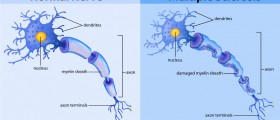
Presbyacusis is a progressive sensorineural hearing loss that occurs as a result of aging. The condition is driven by environmental factors and exacerbated by concurrent disease. The condition can be merely bothersome, but can also be very disabling in its effects. In more serious cases it can lead to isolation and depression. Declining cognitive skill and central auditory processing can also contribute to the development of the condition. Rehabilitative measures can lead to the successful treatment of the condition, and can thus lead to a greater standard of living for the sufferer.
Causes and Risks
Contribution to the onset of the disease is caused by loss of cochlear cells, ganglion cell loss in vestibulocochlear nerve fibres and atrophy of the stria in the lateral cochlear wall. Aging itself is not the root cause of the problem, but a combination of effects of environmental noise toxicity and metabolic or oxidative stress. The incidence of deafness, however, does tend to increase as the body ages. Around fifty five per cent of the population that are over sixty suffer from some degree of hearing loss. The percentage will of course increase in those over the age of seventy.
Certain factors can increase the risk of hearing loss occurring. Exposure to industrial, urban or armament noise can lead to problems, as can the administration of ototoxic medication, such as aminoglycosides, cisplatin, loop diuretics and NSAIDS. A family history of hearing problems or a genetic predisposition to loss of healing can also lead to a greater risk of hearing loss. Other conditions, such as hypertension, high cholesterol levels, diabetes, smoking and a high body mass index can all contribute to increasing the risk of presbyacusis.
Symptoms
Normally, symptoms are onset gradually over the years. Some people might, however, experience sudden hearing loss. Ones ability to properly hear and understand human speech is often a good indication of the possible onset of hearing difficulties. In this case, it might not be the sufferer who in fact notices the onset of the problem. Rather, those who are close to the patient, such as friends or family, might notice the problem first. Comprehension of speech is often said to be difficult, rather than actually hearing the speech itself. Similar words might become indistinguishable from one another.
Auroscopy might reveal the presence of an earwax build up. Opacification of the tympanic membrane is normal with regard to the aging process. This should not affect the acoustic efficiency of the ear.

















Your thoughts on this
Loading...